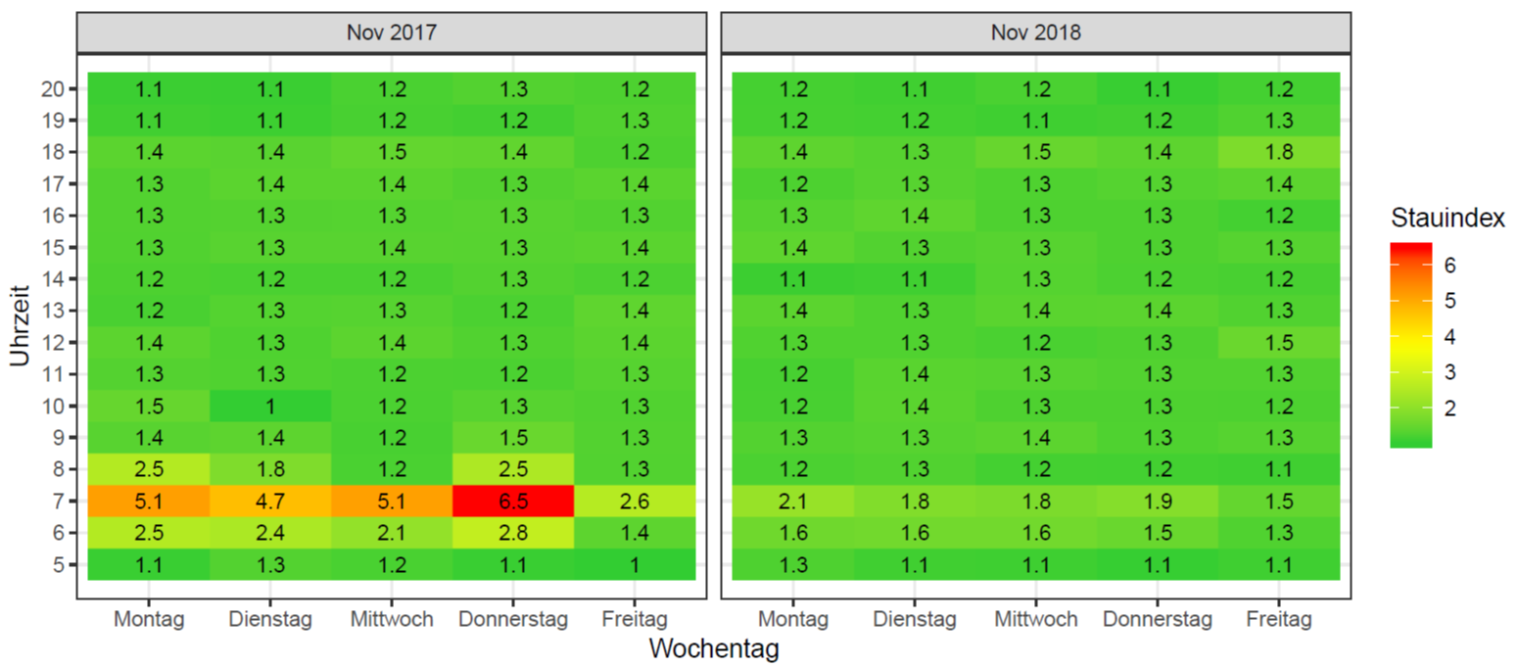Salzburg Research analysed travel time losses in public bus transport for the transport department of an Austrian provincial government. On the basis of this objective detailed assessment, the effect of a new bus lane could be demonstrated.
Challenge
The use of public transport is primarily influenced by the quality of the connections and adherence to timetables. However, especially in bus traffic, there are always strong deviations from the target times. The transport department of an Austrian provincial government therefore looked for answers as to when, where and why these deviations occur in order to be able to counteract them with suitable measures.
Solution
For an objective evaluation of loss times, Salzburg Research analysed the satellite-based movment data of all buses for every second. The data clearly showed the sections along bus routes on which stops or delayed driving behaviour occurred. A spatiotemporal analysis of movement patterns enabled traffic-related stops to be distinguished from other stops.
The result is a detailed overview of the points on a bus line where the lost times occur. After the implementation of structural or traffic measures, a recurring evaluation enables an efficient impact assessment. For a new bus lane, it was thus possible to prove that the loss times of the buses have almost disappeared.
Benefit
With this detailed assessment, the planners and operators of public transport systems were able to objectively determine at which points problematic travel time losses occur. This knowledge makes it possible, together with the road authorities, to develop targeted measures to reduce travel time loss and thereby make public transport more attractive.
A recurring evaluation enables proof of the effects of these measures.
Learn more:





















